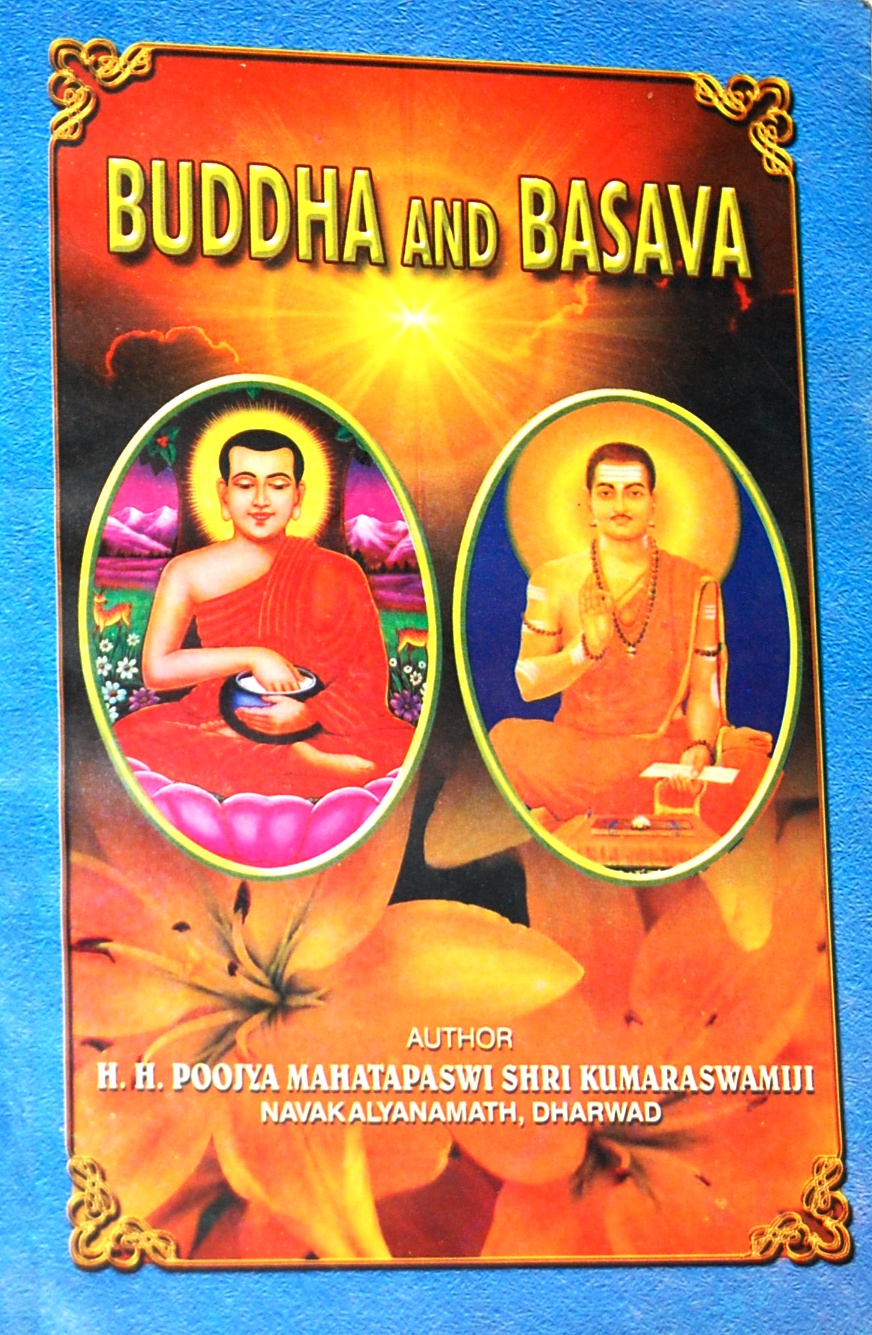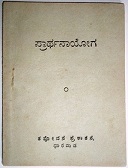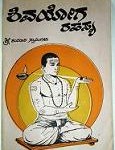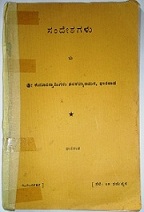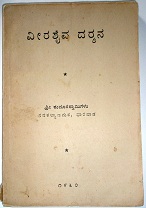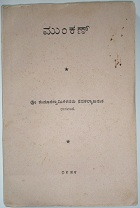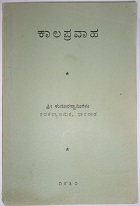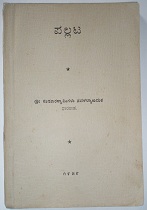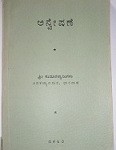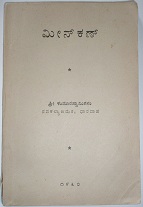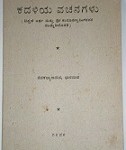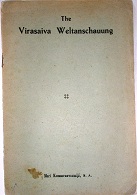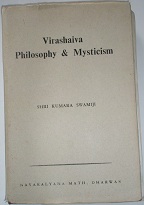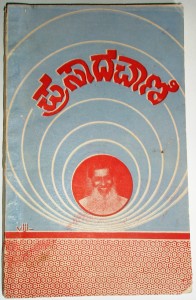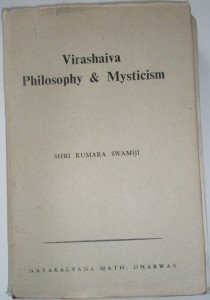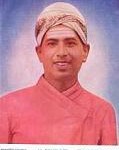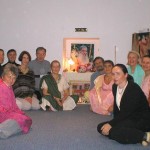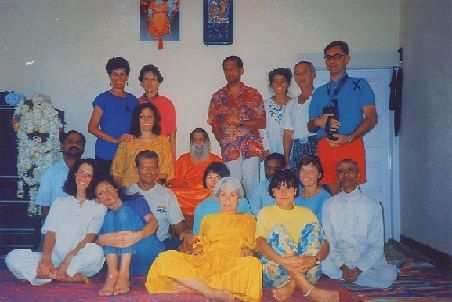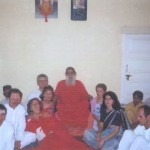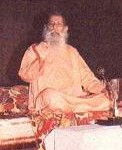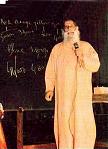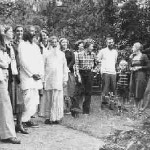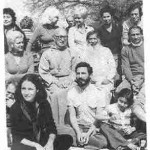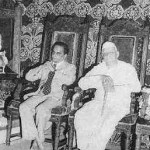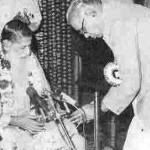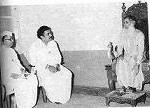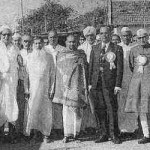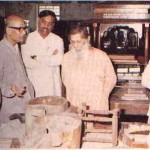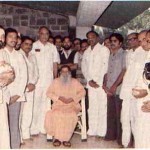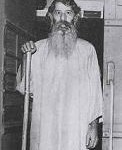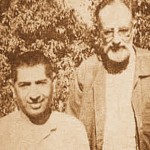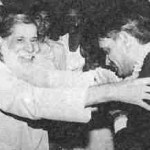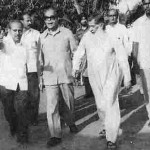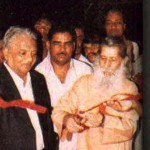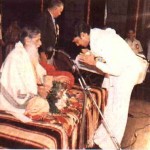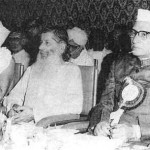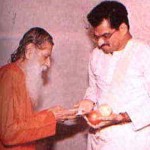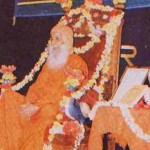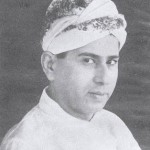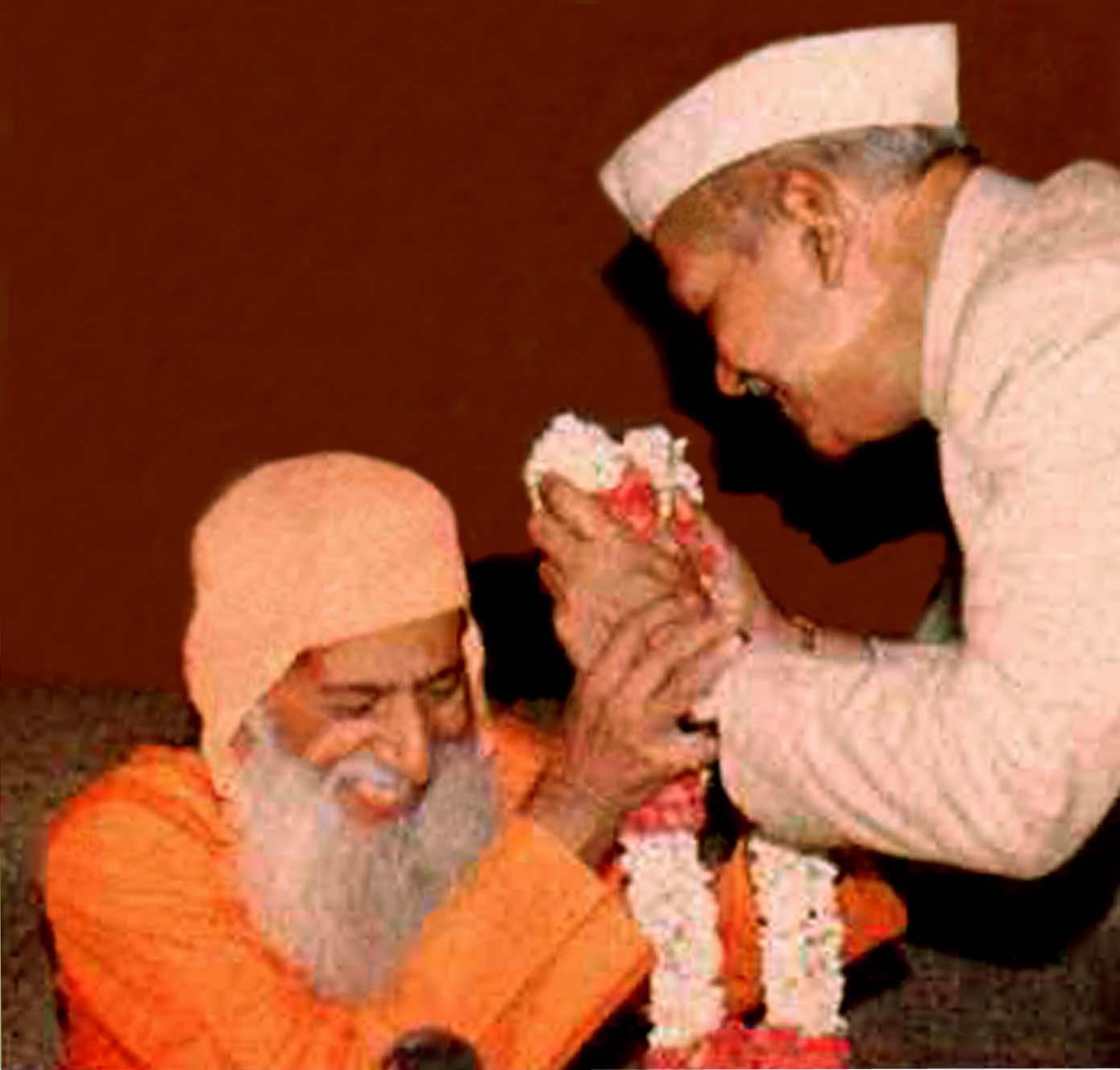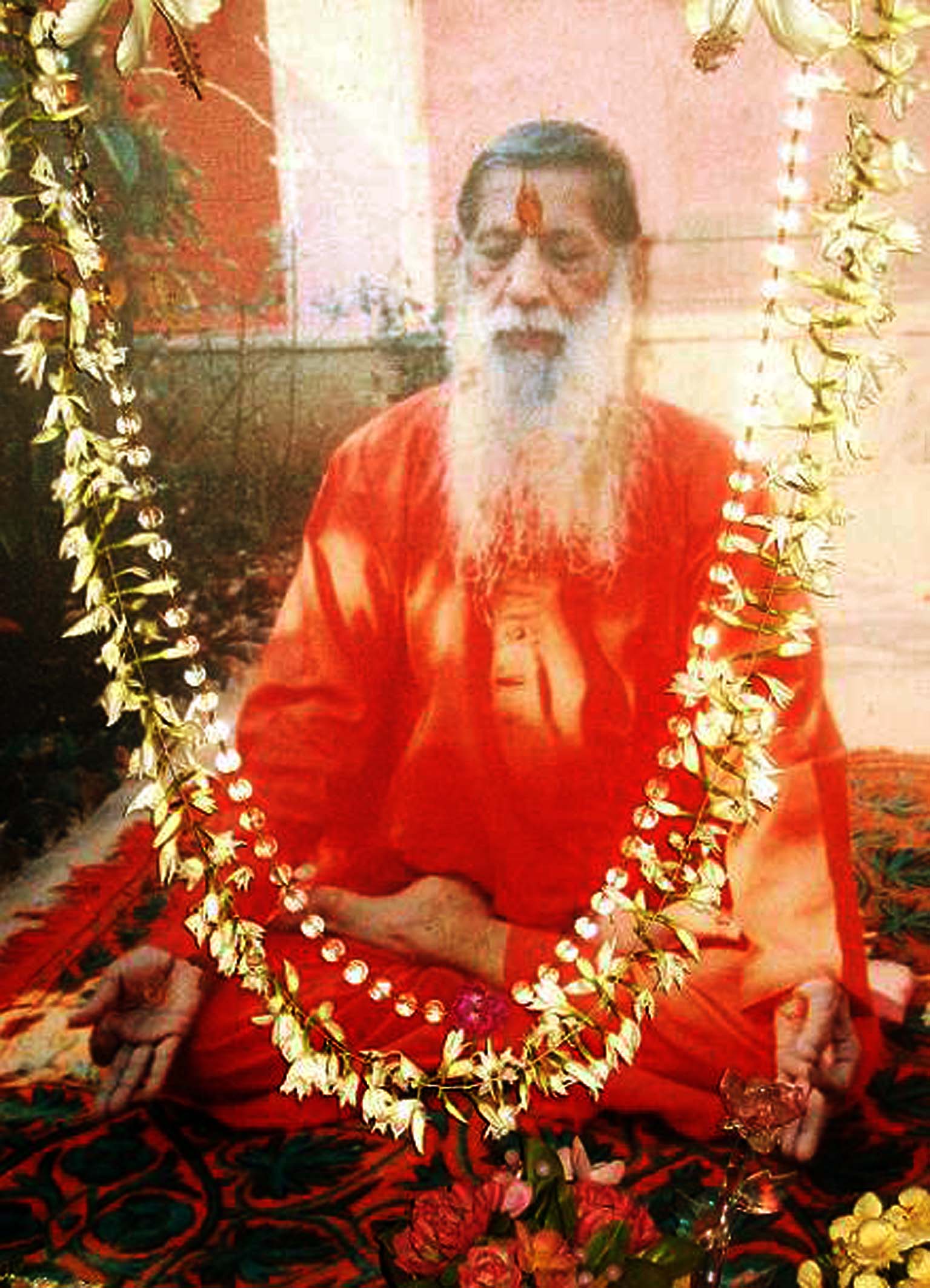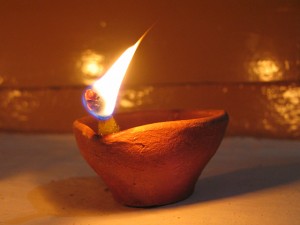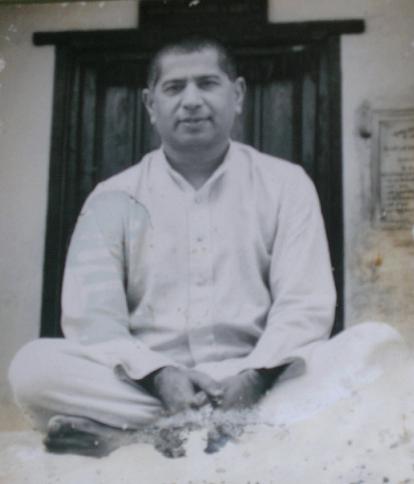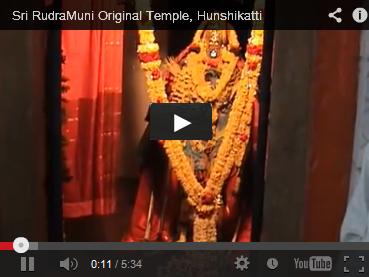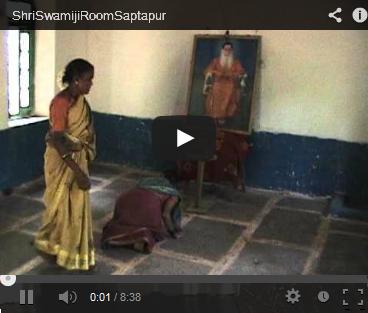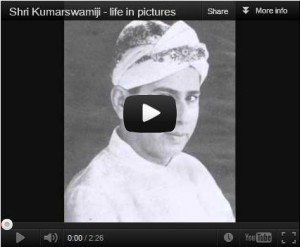Integral association of Shiva and Shakti or Shakti-Vishista Advaita that is the Virashaiva Weltanschauung – the world view of a Virashaiva. For he views the whole world as the expression of the Divine Will under the stress and guidance of the Divine Static and holds that there is only one Chit-shakti – the integral conscious power of the Divine Spirit to characterize which modern science is still fighting shy.The Sharana allows Will or Shakti a very significant position no doubt; he makes it the supreme principle of expression. But Shakti in Virashaiva philosophy has a locus in Shiva. He therefore emphasizes the integral association of Shiva and Shakti, Linga and Jangama, Truth and Will. He characterizes this inseparable unity in terms that attract by their sublime simplicity and rich suggestiveness. The former is supra-cosmic transcendence, and the latter is the cosmic unity; the one is the infinite silence and the other is immanent sublimity.
Virashaiva is generally considered to be a phase of the Agamanta. In the twelfth century Karnatak witnessed an unprecedented revival in Virashaivism. The precursor of this revival was Shri Basava, the Prime Minister to a king named Bijjala who ruled over Kalyan (from 1157 to 1167), a city of historic importance, about sixty miles from Gulbarga in the Mysore State. The magnetic personality of Shri Basava attracted towards him persons of all shades and sympathies from all parts of India, ranging from the prince to the peasant. As a consequence there was an assembly of two to three hundred Virashaiva Saints and Mystics whose sayings in Kannada language stand unrivaled in point of gracefulness of mystery. It is gratifying to learn that there were about sixty women mystics in that assemblage amongst whom was Akka Mahadevi, the beacon light. The pithy and powerful sayings of these Virashaiva mystics or the Sharanas are compared sometimes by great scholars like the late Mahamahaopadhyaya R. Narasimhacharyaru, to the sayings of the Upanishadic seers. The sayings of these Sharanas, that is the supermen of the Lingayat Faith, then are spontaneous and a direct outcome of the divine afflatus springing from within, the result of inspiration through God-intoxication.’ Hence they breathe the spirit of a God-intoxicant one, characterized by redeeming love and refreshing knowledge. Although Virashaivism is a phase of the Agamanta, it underwent radical changes in the hands of Shri Basava and his colleagues to such an extent, that it became Lingayatism – the special faith of the Karnatak Virashaivs – the philosophy of which will be our immediate concern.
Robert Arch defines philosophy as the attempt to think rigourously and consistently about the world which undeniably is there. But the world as it exists in our normal consciousness is a duality which the intellect obstinately refuses to resolve into a unity. It presents a ‘higher’ end and a ‘lower’ aspect, an abstract or transcendental region and a concrete or definable one; or in other words, it represents the higher term Spirit and the lower term Matter, which the formal mind refuses to revolve into an inexpressible sense of harmony and unity. Seeing, then, that these two regions or poles actually exist in our normal consciousness we must at least postulate that there is a reconciliation between the two. And the deeper mind in us intuitively feels that there must be some link between the spirt or the higher transcendental region of our nature and the matter or the lower necessitous region of time, space and causation. So it seeks a term which will admit both and identify both. It demands not an elimination of either but a reconciliation.
What is that term which connects and co-ordinates spirit and matter? It is in the words of Indian philosophy Mahat or Brihat, the cosmic consciousness; and cosmic consciousness becomes real to spirit and spirit becomes real to matter and the dualism between them breaks down. If we refuse to recognize this connecting and coordinating link between spirit and matter, the two must appear as irreconcilable opponents bound together in an unhappy wedlock and their divorce, the one reasonable solution. This Mahat or Brihat is one and indivisible in essence but in manifesting in it becomes a complex rhythm, a scale of harmonies, a hierarchy of states or movements. This hierarchy is composed by a descending or involutive and an ascending or evolutive movement, of which spirit and matter are the highest and the lowest terms. Between these two terms or creations linking them together is the world or the organization of consciousness, of which the Infinite Truth of things is the foundation. ?There dominant individualization no longer usurps the all-pervading soul and the foundation of consciousness is its own vast totality arranging in itself individualized movements, which never lose the consciousness of their integrality and total oneness with all others. Multiplicity no longer prevails and divides, but even in the complexity of its movements always refers back to essential unity and its own integral totality. This world or organization of consciousness is therefore called Mahalinga, the Divine Static, in Virashaiva philosophy. It is this Mahalinga that is the Shiva of the Shaivas, the Brahman of the Upansihads, the transcendent Reality of the Ontologists, the God of the Gnostics and the Absolute of the Philosophers.
The Absolute, says Bradley, is supra-personal; the absolute says Bosanquet is teleological. Combining these two views the Virashaiva mystic or the Sharana says that the Absolute is the impersonal personality, that it is at once transcendent and immanent, static and dynamic. The static aspect of the Absolute is called Sthira, Shiva or Linga; and the dynamic aspect of the Absolute is called Chara, Shakti or Jangama in Virashaiva philosophy. This Chara or Shakti is the dynamic divine Will which is the personality of the Absolute Truth or Shiva Linga for the Shvetashvatara Upanishad describes this Will as the very soul of the Lord hid in the modes of its own workings. Devatmashaktih svagunair nigudha. This divine Will exists, therefore, in the Absolute Truth by the relation of identity, Samarasya, which has been expressed very vividly by the Sharanas in their sayings and one of the sayings of Shri Basava in this connection runs thus:
As submarine fire is hid in the waters of the seas,
“As a ray of ambrosia is hid in the moon,
As fragrance is hid in the flower,
As affection is hid in the maidens,
So is Truth hid in the heart of Will,
O Lord of the Spiritual Unification”.
It is this integral association of Shiva and Shakti or Shakti-Vishista Advaita that is the Virashaiva Weltanschauung – the world view of a Virashaiva. For he views the whole world as the expression of the Divine Will under the stress and guidance of the Divine Static and holds that there is only one Chit-shakti – the integral conscious power of the Divine Spirit to characterize which modern science is still fighting shy. Even the Western philosophers are at a loss to define it. Before Barx calls this Will an a-logical element and as such he stresses the a-logical element of feeling against the Hegelian tendency to find in thought or knowledge the sole foundation of the real. This is an approach, in some respects, to the position taken up by Schopenhauer and Von Hartmann, but without those thinkers pessimism. Emphasis on the ‘a-logical’ has been carried to more sensational conclusions by Henri Bergson who denies altogether the ultimate validity of intellectual judgments. For him as for Schopenhauer, the thing-in-itself, whether in man or in external nature, is irrational impulse – the ?lan vital. But the nature of this ?lan vital remains in Bergson somewhat vague and undefined. He calls it the ‘vital fluid’ the cosmic force, of which the whole universe is the play. He conceives life to be a stress a stir; but to the Sharana it is a constant urge of the Dynamic Divine. He does not draw his inspiration from the unconscious prompting or the sub-conscious ideation in man like Bergson. But he draws his philosophical inspiration from the height of the supra-mental super-conscious force, the Chit-Shakti. In this the Sharana is nearer to Schopenhauer than to Bergson. Will in Schopenhauer is the primal reality which objectifies itself in the form of ideas. He can see that Will lies beyond the realm of Platonic ideas and necessity is superior to logical reasoning. He has the philosophic genius to see that Will is more dynamic than personal and hence the idea of reason cannot appeal to him. But he has not the insight to see the static and transcendent aspect of consciousness, which is called Mahat or Brihat in Indian philosophy. His philosophy has therefore, removed the ordinary localization of change to a center.
The Sharana allows Will or Shakti a very significant position no doubt; he makes it the supreme principle of expression. But Shakti in Virashaiva philosophy has a locus in Shiva. He therefore emphasizes the integral association of Shiva and Shakti, Linga and Jangama, Truth and Will. He characterizes this inseparable unity in terms that attract by their sublime simplicity and rich suggestiveness. The former is supra-cosmic transcendence, and the latter is the cosmic unity; the one is the infinite silence and the other is immanent sublimity. Between these two the Sharana has attempted a synthesis by saying that the cosmic will or Shakti is the manifestation of the supra-cosmic Reality or Shiva which it really transcends. The cosmic Will has no absolute existence, it is in fact the concentration of the transcendence; being a concentration it is more seeming than real; it is relatively real.
This divine Shakti is therefore conceived as creative, conservative and destructive from the cosmological view-point; as redemptive from the theological view-point; and as supra-subject from the epistemological view-point. But Shiva transcends this immanental sublimity or Shakti. It is the Infinite Luminuous Silence, the silence that resides in the heart of all things. It illumines all, but itself as an object always eludes our grasp. This silence is the plenum of being and consciousness; it is also the delight of freedom. This infinite luminous silence or Mahalinga has the sense of ‘fullness without content, completeness without growth or fruition, freedom without tension or resistance. And the Will moves in the sphere of this luminous silence, in the atmosphere of supreme awareness. It is therefore an outflow from the Supreme, a divine movement of the Eternal and an immanence inherent in the Infinity. What science calls matter and energy, what metaphysics calls subject and object, are only the bipolar expressions of this Divine Will. And it is this Shakti that expresses finer forms in the gradual unfoldment of Life, which accounts for the different kinds of energies set in a hierarchy – physical, vital, mental and even supra-mental.
The transformation of the physical, vital and mental under the influence of the Mahalinga or the Divine Static and their movement and functioning in the Divine Dynamic are the great promise of the Virashaiva philosophy. The spiritualization of matter is a great advance in the Lingayat Faith. Plato seeks supreme satisfaction and felicity in the realm of super-sensible ideas; for to him the impress of matter upon the soul is tormenting. The Bible maintains an apparent duality or polarity of our nature and keeps spirit and matter eternally apart, treating matter as illusion and spirit alone as reality. The Vedanta and the Sankhya equally condemn the movement of ignorance and seek rest in transcendence. It is true that an attempt has been made in the Vedanta to make the life’s movement conceived in spirit, but the Vedanta by allowing a distinction between the relative and the Absolute and finally, by totally denying any possible synthesis between the two, emphasizing the uniqueness of the Absolute and its realization and does not harmonize dynamic spirituality with transcendent quietism. Even the Agamas extol Shiva-hood as the final consummation of life; the super-sensible is set against the sensible and a division between spirit and matter is conceived to exist. But in the synthetic philosophy of Virashaivism, the integral association of Shiva-Shakti cannot allow any division to subsist between spirit and matter; hence in the Lingayat Faith the divinization of life is considered as the desirable end or consummation.
The obliteration of the division between the spirit and matter, the sensible and the super-sensible introduces a new meaning into spiritual life and values. Matter is eternally plastic and with the touch of spirit it dissolves its stiffness and exhibits its pliability, so that it can be a safe instrument for spiritual expression. In fact matter is an illusion of intellect. From the standpoint of life there is no matter but only the play of spirit through different grades of expression. It is indeed a kind of illusion to think of the division between body and mind, and humanity has long suffered under that illusion. The supra-mental Force or Chit-Shakti is the only reality and if with the different thought-currents the nervous system is affected and the tone is changed, then there is no wonder that the Transcendent Energy can spiritualize the flesh and remove the sense of materiality. The spiritual is the real and the material is at bottom spiritual. Because we are accustomed to think in terms of intellect, we are committed to this kind of dualism. Bergson has truly said that intellect represents in a statical form what is really living and dynamical and if, instead of taking our guidance from intellect, we take our inspiration from life, the cast of existence would appear fundamentally different. Bergson is the protagonist of intuitionalism and he would admonish us to look at life from the view-point of intuition. Viewed in this light what happens? Matter ceases to exist. If we succeed in setting aside this inertia, materiality will disappear and life will present to us an aspect of dynamism.
This possibility of spiritualizing matter makes the connection between heaven and earth direct. The kingdom of God is not to be sought beyond but here. The true spiritual effort lies then not only in the striving after transcendent existence but in making matter the channel of expression of spirit. In this connection it is pertinent to quote the sayings of Shri Basava which run thus: ‘Indeed he cannot be a superman so long he labours under the illusion that there is a demarcating line between heaven and earth?.. And the earth is, as it were, a mint managed by God – those who deserve well here, deserve also well there.’ The whole movement of life is directly related to the transcendent Energy; for, by being thus related the movement grows in fullness and perfection. Hence the minutest events have a setting in the cosmic life; and in the Lingayat Faith the meaninglessness of life and its illusion are replaced by its richness and actuality. Nothing in life is meaningless, nothing in it is purposeless, since every movement in life is the expression of bliss and beatitude and their so called uneventfullness or discord originates from their isolation from the whole setting and our inability to read the divine purpose in life.
To the Sharana Reality is then not only divine Puissance but is also divine History. The Reality urged by an inner divine compulsion evolves the whole world out of itself, and in the course of evolution it reveals the divine purpose through different phrases of life. This position is similar to that taken up by Croce and Gentile the Italian philosophers, who insist on the ultimate reality of time and on the extreme importance, therefore, of history as the progressive attainment of self-consciousness by the world-spirit. The world-process then in Virashaiva philosophy is not an illusion but an integral play. In introducing this conception of the integral play into the ultimate Reality, the position of the Sharana becomes somewhat different from the extreme transcendentation of Shankara on the one hand, and from the theistic position of Ramanuja and Chaitanya on the other. In Shankara’s philosophy Lila or play is a concession to the theological attitude. In Vaishnavism a distinction is made between the Antaranga Lila and the Bahiranga Lila. But to the Sharana Lila or play is the very soul of Reality; it is the expression of dynamic fullness in integrity. He views life in its entirety as ever creative and ever complete; and the joy of completeness is the joy of harmony; for in the infinite life which is ever complete and ever accomplished the sense of harmony is never lost. Even if there are changes – and there are incessant changes in infinite life – they take place according to the law of harmony.
Spiritual dynamic fullness is the greatest conception in Virashaivism. In Indian thought dynamism of life has not received due recognition. Even in the Tantras and the Agamas which are considered to be the repository of dynamic spiritualism, an attempt is made to transcend all forms of dynamism however fine. But the Virashaiva philosophy lays stress on the dynamism of spiritual life and the transfiguration of every movement of life through the instrumentality of Ista-linga (an ideal of Infinity that the Sharana or the superman of the Lingayat Faith always wears upon his breast), is indeed unique. This uniqueness has introduced into the Virashaiva system which is called Sat-sthala, the ideal of divine transfiguration and spiritualization of all the forces in man in place of liberation. To the Sharana, then, liberation or emancipation is not the ideal. The greater ideal is life and its divinization. Emancipation presupposes an internal conflict between life’s possibilities and spirit’s transcendence, and makes the former meaningless. The setting of the immanental beauties and sublimities equally loses force with life’s stirrings and formations. Though the Sharana denies the conception of emancipation in the usual sense still he is fully alive to the supreme puissance of life in the divine Ananda. He conceives a state in life when every movement will be spiritual and the finest peace of soul shall be established in the greatest movement of life. The free respose will be enjoyed in the transparent light and intrepid activity. In this greater ideal which the Sharana calls the Sarvanga-linga-sthala, all the beauties and harmonies of the Divine Life are thrown open to man and every movement of life will be felt as divine. Life is to be completely divinized and humanity should be installed in a Divine Society.
This is the promise of Virashaiva philosophy.
This article -The Veerashaiva Weltanschauung – is taken from H.H.Mahatapasvi Shri Kumarswamiji-s book, -Virahsaiva Philosophy & Mysticism-.











